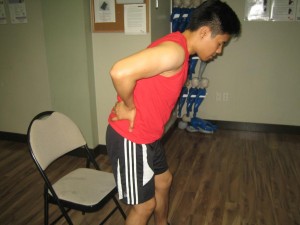Hip bursitis happens when the large bursa found on the outside of the hip becomes inflamed. Hip bursitis is strikingly comparable other conditions such as hip osteoarthritis and lower back pain.
https://www.youtube.com/watch?v=f4xKBwX0FLc
Hip bursitis causes tenderness and pain on the outer area of the hip. The pain may spread down the outside area of the thigh and sometimes at the buttock, groin and lower back. There is pain when walking, climbing stairs, getting out of a vehicle and lying down on the affected side of the hip.
Symptoms of hip bursitis
- Pain that becomes worse after long periods of inactivity
- Pain in the hip
- Severe pain with performing repetitive activity such as jogging, walking or climbing stairs.
- Tenderness of the hip
Pain that becomes worse after long periods of inactivity. - Pain from the lower hip can spread down the outside area of the thigh or other areas in the body such as the groin, buttocks and the lower back.
- Swelling of the hip, fever, redness and warmth
Causes
- Hip injury or trauma such as falling on the outside of the hip or banging the hip on a hard surface can result to the buildup of blood in the bursa and inflammation of the lining.
- A repetitive pressure on the hips such as running, biking and standing for long periods of time.
- Women are more susceptible to hip bursitis than men but it can also affect people in their 40s, 50s and 60s.
- Rheumatoid arthritis and gout
- Previous surgery to the hip
- Bacterial infections of the bursa such as septic bursitis.
- Inflammation of the bursa
- Bone spurs and calcium deposits
Treatment
- Take plenty of rest especially the affected hip before resuming regular activities. Avoid activities that can cause inflammation of the bursa such as sports and standing for long hours.
- Apply ice or cold packs on the injured hips to lessen the pain and swelling. Avoid applying the pack directly on the skin to prevent frostbite. Wrap the pack with a towel or small piece of cloth before applying on the area.
- Take the prescribed anti-inflammatory medications such as ibuprofen, aspirin, and naproxen to lessen the inflammation, swelling and pain.
- Seek the help of the physical therapist for some rehabilitation exercises to stretch or strengthen muscle of the hips and prevent future cases of bursitis.
Tips
- Avoid excessive straining of the hips to prevent hip bursitis.
- Avoid performing activities that are difficult and triggers pain.
- Warm-up and stretch before performing exercises to prevent injuries
- If overweight, cut down some weight to lessen the pressure on the hips and joints
- Strengthen the hips to minimize the chances of developing bursitis.

